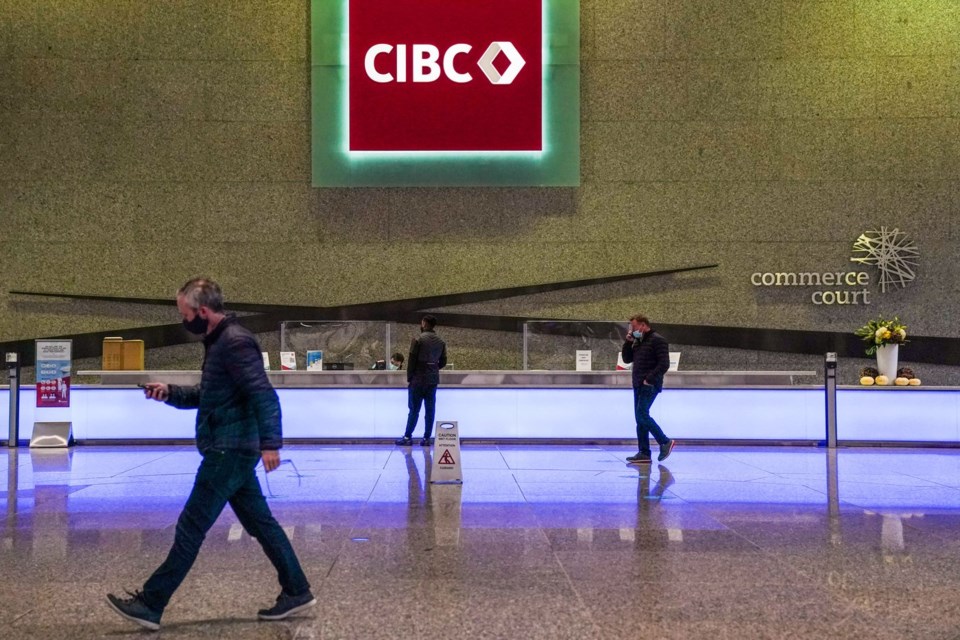TORONTO — CIBC and Royal Bank wrapped a round of second-quarter bank earnings on Thursday that showed rising but manageable consumer strain.
In what was the last quarter before the Bank of Canada is widely expected to start cutting interest rates, all banks showed they set aside more money for potentially bad loans from last year as the higher-for-longer rate environment hits borrowers.
Unsecured borrowing, like credit cards, was pointed to as the biggest area where people are falling back on payments, while homeowners are so far largely still managing to pay their mortgages.
The commentary matches recent survey data, including a report from TransUnion out earlier this week that showed Canadian credit card delinquencies at 0.91 per cent, up 0.14 percentage points from last year, while mortgages more than 90 days past due were at 0.15 per cent, up 0.04 percentage points.
Banks said the results fit within their risk expectations, but that strain, and the money they set aside to account for it, could rise in the months ahead.
"We continue to expect (provisions for credit loss) trending up a little bit more in the second half of the year," said CIBC's chief risk officer Frank Guse on an earnings call Thursday.
"That should be expected against the macroeconomic environment, but we do remain overall very comfortable with our performance and credit quality in the Canadian consumer book."
Banks also warned that even if the Bank of Canada does start to lower rates, with rate decisions expected in both June and July, it will take time for pressure to ease on borrowers.
"It will take a few quarters ... for it to start to really support the Canadian consumer," said Scotiabank chief risk officer Phil Thomas on a Tuesday call.
He noted that average borrowers in cities like Toronto and Vancouver, where they're seeing the most trouble, will see only about $100 off their monthly payments with the first 0.25 percentage point drop by the Bank of Canada.
While borrowers are making mortgage payments, those with variable rates are struggling more, as are some with used auto loans, said Thomas.
"We're seeing friction in those portfolios."
And while all eyes are on central bank rates, what's happening with employment and the economy will be just as important for repayments, said RBC chief risk officer Graeme Hepworth.
"It's hard to comment on the rates by itself. It really depends on what's happening with the other key macroeconomic variables out there," he said on a call Thursday.
"It's going to be much more driven by what's happening with unemployment, what's happening with house prices in conjunction with that."
RBC still sees a one percentage point cut total from the Bank of Canada by the end of the year, and another next year, but in the near term it will still be hard for borrowers, said Hepworth.
"When we think about retail credit and retail credit in Canada, I think we're still on kind of the upswing there, particularly led by the unsecured retail products."
But while banks have had to take precautions on the consumer strain, and loan growth has slowed, they also generally saw more active trading as markets picked up, and overall still managed to make money.
All combined, the Big Six reported about $13.13 billion in profits last quarter.
This report by The Canadian Press was first published May 30, 2024.
Ian Bickis, The Canadian Press




